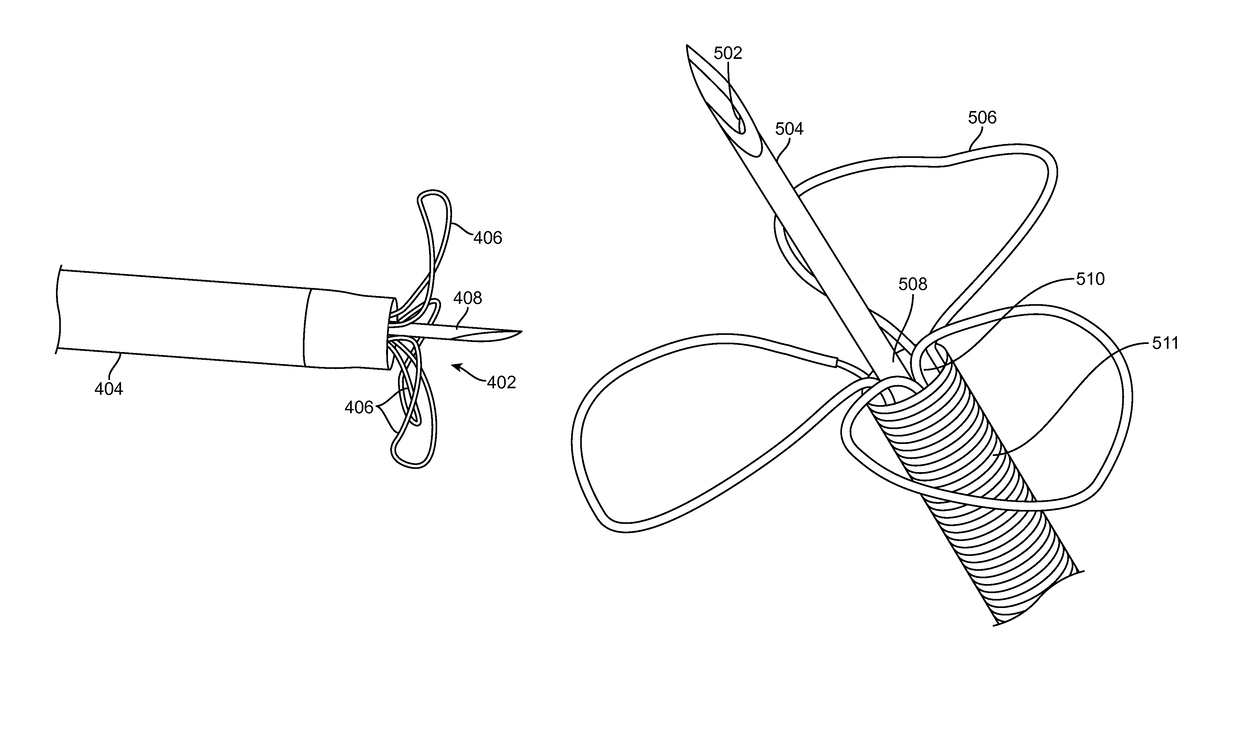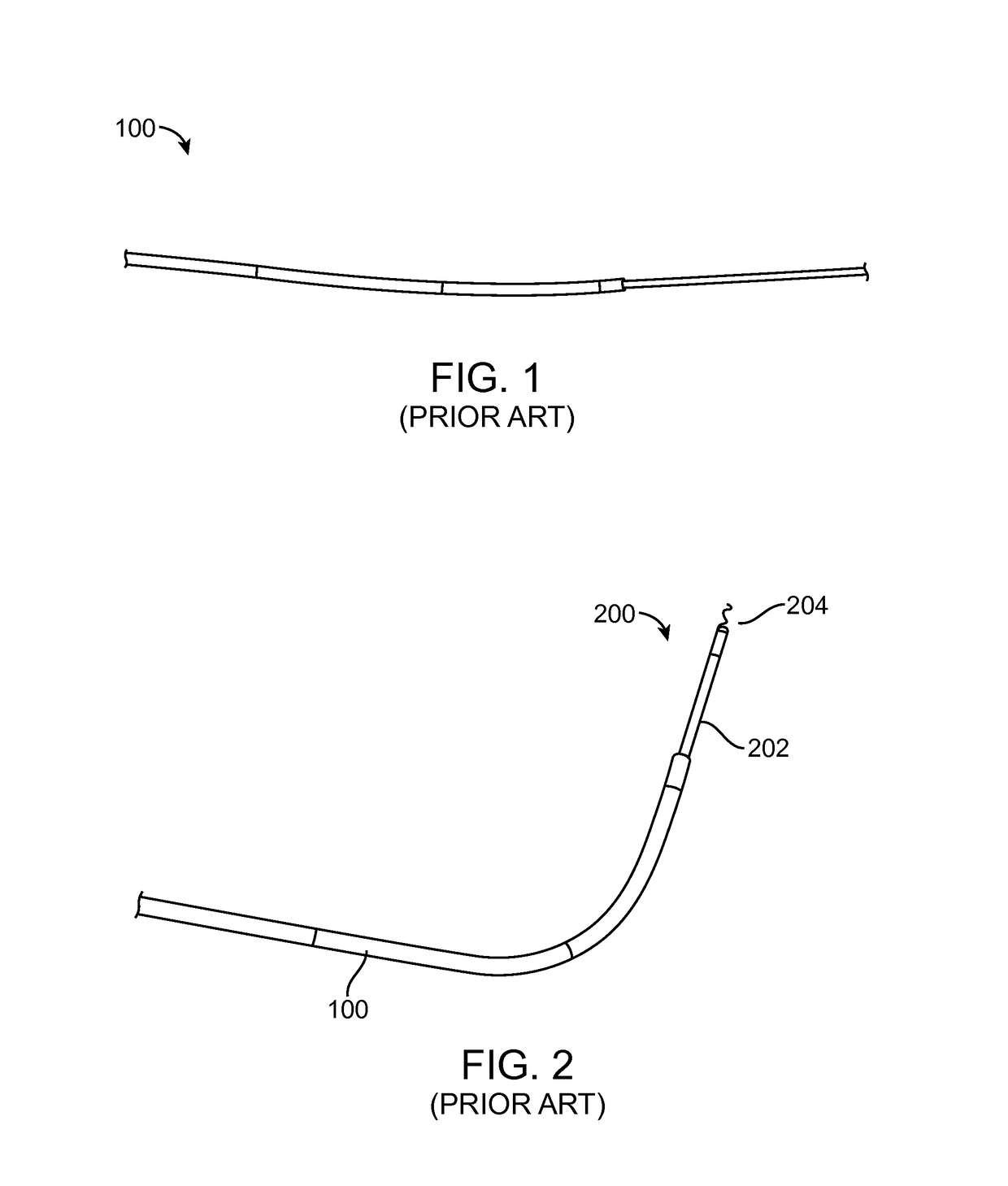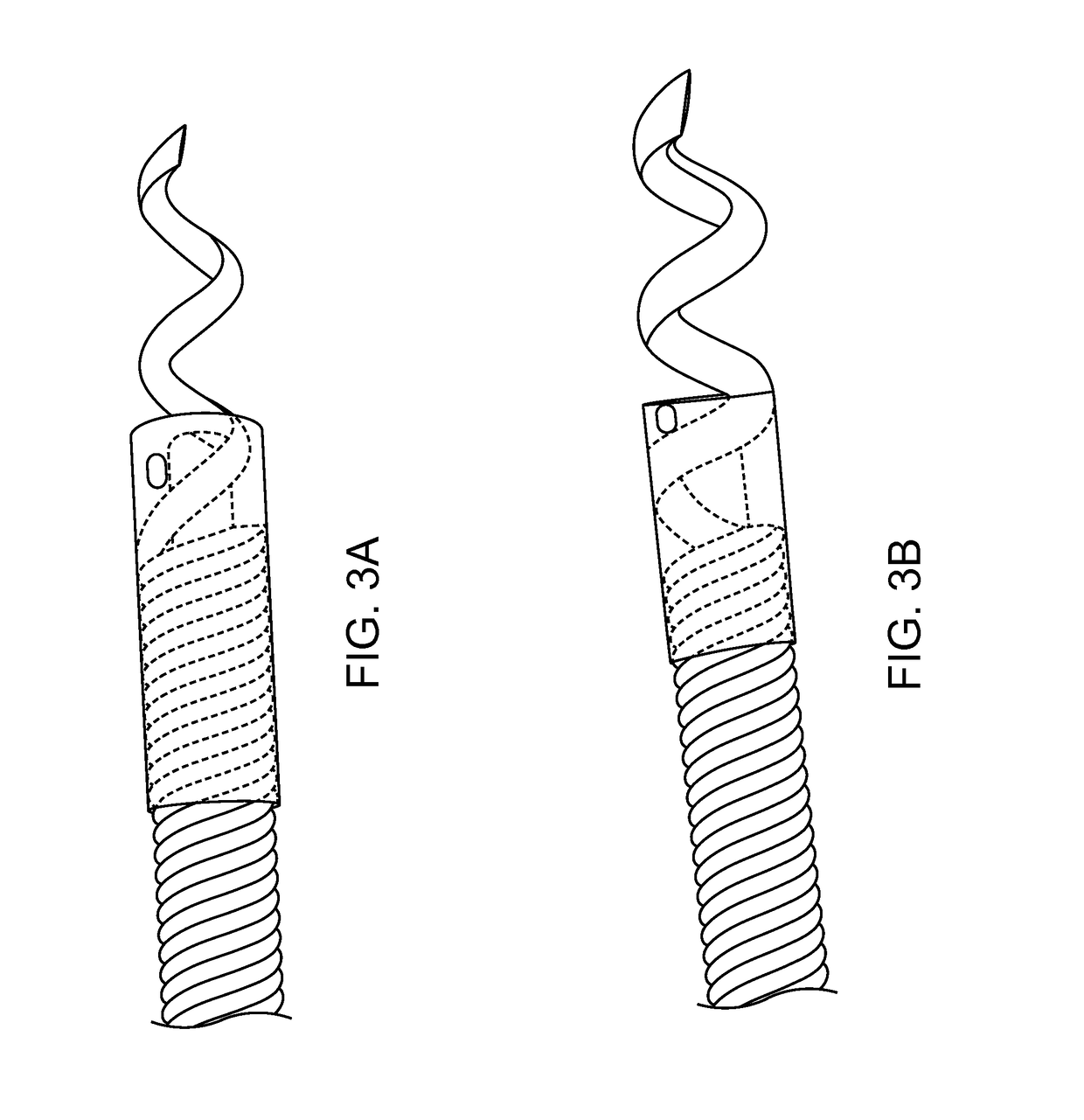Radial and trans-endocardial delivery catheter
a technology of endocardial catheter and radial endocardium, which is applied in the field of medical methods and systems to achieve the effect of sufficient column strength and pushability
- Summary
- Abstract
- Description
- Claims
- Application Information
AI Technical Summary
Benefits of technology
Problems solved by technology
Method used
Image
Examples
Embodiment Construction
[0050]FIG. 1 (Prior Art) shows a preformed 6F Hockey Stick (HS) 90 cm guide catheter 100, such as the ConcierGE® Guiding Catheter, available from Merit Medical Systems, Inc., which is advanced straight or over either a dilator or a guide wire from either the femoral or radial artery. Because the distal segment is highly flexible, the guide catheter may be safely advanced across the aortic valve into the left ventricle. The guide catheter 100 may be advanced into a femoral artery using any commercially available 6 Fr sheath. For radial access, a longer 25 cm sheath such as the Boston Scientific Super Sheath Catalog 16037-06B is preferred to avoid complications with radial artery spasm which occurs frequently in patients.
[0051]FIG. 2 (Prior Art) shows the preformed 6 Fr HS 90 cm guide catheter 100 after a central straightening element, such as a dilator or wire, is removed and a trans-endocardial infusion catheter 200 with a highly flexible distal segment 202 with a length of at least...
PUM
 Login to View More
Login to View More Abstract
Description
Claims
Application Information
 Login to View More
Login to View More - R&D
- Intellectual Property
- Life Sciences
- Materials
- Tech Scout
- Unparalleled Data Quality
- Higher Quality Content
- 60% Fewer Hallucinations
Browse by: Latest US Patents, China's latest patents, Technical Efficacy Thesaurus, Application Domain, Technology Topic, Popular Technical Reports.
© 2025 PatSnap. All rights reserved.Legal|Privacy policy|Modern Slavery Act Transparency Statement|Sitemap|About US| Contact US: help@patsnap.com



